By Anna Cook. This guide to driving cross country solo contains affiliate links to trusted partners!
Looking for tips for driving cross country alone and having an amazing trip?
Then you’re in the right place!
When you begin considering driving cross country alone, it can be a little intimidating.
From choosing a car and preparing your vehicle to planning the route and anticipating speed bumps—literally and figuratively—there are many things to consider.
But, I’m here to ease your mind. As a full-time travel blogger and lover of road trips, I’ve taken many long-distance solo road trips and have driven cross country alone.
It’s actually not as difficult as you may think, especially with the right tips and strategies to set you up for success. I’ll be sharing those below!
Solo road trips take a little bit of extra preparation, but it is absolutely worth it as they are incredibly liberating.
On that note, pack your bags and get ready for an unforgettable cross country road trip!
 Short on time? Here are some helpful resources for planning a solo cross country road trip:
Short on time? Here are some helpful resources for planning a solo cross country road trip:
 Car Rental: Save up to 70% with DiscoverCars
Car Rental: Save up to 70% with DiscoverCars
 Solo Road Trip Planning: Roadtrippers (get 15% off with code BTR5QTP)
Solo Road Trip Planning: Roadtrippers (get 15% off with code BTR5QTP)
 Helpful Apps:
Helpful Apps:
–Campendium and The Dyrt to look up campsites
–AllTrails for finding hikes
–Atlas Obscura for offbeat attractions
 Safety Essentials: Along with a first aid kit, get a satellite communicator like the Garmin inReach Mini 2 if you’ll be solo hiking, driving, or camping in remote areas where there may not be cell service
Safety Essentials: Along with a first aid kit, get a satellite communicator like the Garmin inReach Mini 2 if you’ll be solo hiking, driving, or camping in remote areas where there may not be cell service
 Travel Insurance: SafetyWing
Travel Insurance: SafetyWing
 Staying Connected: Airalo eSIM
Staying Connected: Airalo eSIM
Confidently Drive Cross Country Solo [Free Course]
But first, before we go over how to drive long distance alone and have a great time, I invite you to grab a seat in Jessie’s free Savvy Solo Traveler E-Course.
The 6-day course is designed to help you feel confident about booking your first solo trip and exploring the world alone.
Lessons include:
- Common solo travel fears and how to overcome them
- How to choose your perfect solo trip
- How to tell loved ones you’re hitting the road solo
- Mentally preparing for your solo journey without losing your mind
- Essential steps for staying safe on a solo trip
- How to take amazing solo selfies
Once you’ve grabbed your seat, keep reading for important driving cross country alone tips that will help make your road trip safe and unforgettable!
Is It Safe To Drive Cross Country Alone?
Yes, it’s safe to drive cross country alone! However, it’s still always smart to take precautions and plan for emergencies.
I’ll go over many tips for staying safe while driving across the country alone, but the biggest thing to remember is to trust your instincts, have an emergency plan (like AAA or a satellite communicator), and be prepared.
As someone who has taken many 10+ hour road trips, one of the biggest safety concerns is getting too tired. You’ll want to make sure you stay hydrated and well-rested by getting at least 7 hours of sleep per night while traveling alone.
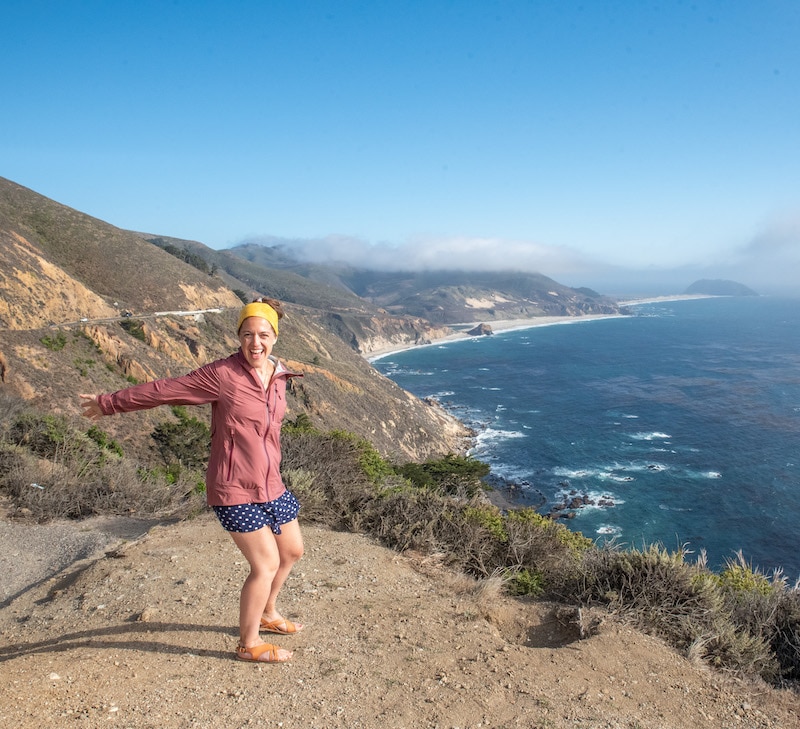
Renting A Car For Your Solo Road Trip
Need to rent a car for driving cross country? Check out Discover Cars to quickly compare your rental options.
Their comparison tool does the homework for you, so there’s no need to have up 10+ tabs trying to figure out which company is the most affordable. Actually, you can save up to 70% using their tool!
Tips For Planning A Trip Cross Country Alone
The planning part can be the most fun; but, it can also be the most overwhelming. There are so many options and it’s hard to choose what to do and which route to take. To help, let’s go over some important tips for long road trips alone cross country.
1. Set realistic goals
One of the biggest mistakes that people make is planning to drive way too far in a single day. Not only can this be exhausting, but it leaves little room to actually explore as you drive across the country.
I recommend planning to drive a maximum of 8 hours each day unless you are very short on time. If you want to visit attractions one day, then plan on driving even less than that.
Realistic goals will help you stick to the itinerary that you create so you don’t get burnt out and aren’t scrambling to make up time at the end.

2. Consider the time of year
The time of year that you plan on traveling has a huge impact on your road trip and having as amazing journey. As someone from the southern US, I am not accustomed to driving in the snow.
I would be pretty nervous road tripping alone through the Rockies in the winter. If you’re like me, then you’d want to take a southern route in the winter.
On the flip side, if you’re traveling in the summer, consider taking a more northern route as driving through desert climates of the southwest might be too hot.
You’ll also want to think about timing in terms of crowds. During peak fall leaf-peeping season places like New England, the Blue Ridge Mountains, and even Colorado will be very busy with increased accommodation prices.
3. Create a balance
To really have fun on your solo trip, plan for a balance of longer driving days mixed with shorter driving days meant for exploring and even a rest day every so often depending on how long your trip is.
This allows you to enjoy more of your trip instead of just seeing the sites from behind the wheel. Try to plan a few guided tours in cities or National Parks so you can see the major points of interest quickly.
In my opinion, these exploration days are what make the road trip extra special!

4. Have an emergency plan
When I knew that I was going to be taking more solo female road trips, my husband and I agreed that we would sign up for AAA Roadside Assistance.
This way if anything happens to my car while I’m traveling I can easily get a tow. Just make sure to read the fine print on the membership options about towing distance.
I’ve also set up my emergency contacts in my phone so anyone can contact my husband in case of an emergency.
If you have an iPhone 14 or later, you can set your phone to automatically alert your emergency contacts and emergency services in case of an accident. Here is how to set this up.
Tips For Creating A Solo Cross Country Road Trip Itinerary
Assuming that you have your starting and ending point chosen, there are still many options for routes you can take when driving cross country solo.
Just as there are pros to solo travel in general, there are benefits to a one person road trip—the biggest being that you get all the say in where to stop and what to do. In this section, we’ll go over how to really take advantage of this perk.
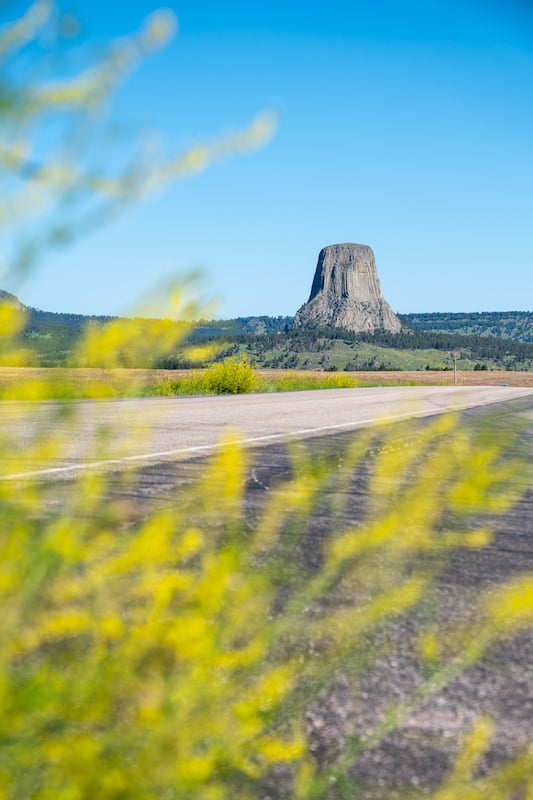
5. Utilize road trip planning tools
First, familiarize yourself with popular routes like the Blue Ridge Parkway, Route 66, or the Mighty 5 in Southern Utah. Here are more of the best solo American road trips if you’re looking for ideas.
Once I have a general idea of my route, I love getting on the Roadtrippers app to look around at what’s along those paths.
 Bonus: You can get $5 off an upgraded Roadtrippers membership with code BTR5QTP.
Bonus: You can get $5 off an upgraded Roadtrippers membership with code BTR5QTP.
You can filter what it shows you by interests like the outdoors, sights & attractions, and activities & experiences.
From there, I start saving things—the free plan allows you to add 7 stops—but you can also just write them down or save them in your Google Maps under a dedicated list.
There aren’t a lot of reviews on Roadtrippers so I use Google Maps to check those plus Campendium and The Dyrt to look up campsites.
Other helpful road trip apps and websites I use include AllTrails, which is great for finding hikes, and Atlas Obscura for offbeat attractions.
6. Prioritize “must-sees” vs “would be nice”
Once you have an idea of the route you’ll take and some things you are interested in along the way, you’ll want to start prioritizing them.
Which ones appeal to you most that make sense between your start and end points? Start making a list of your “must-sees” vs the things that “would be nice.”
Your “must-sees” will become your route. Keep a list of your “would be nice” spots though in case you have extra time or something comes up and you aren’t able to visit one of your “must-see” spots.
For example, when I’m traveling I always look for National Park sites as my “must-see” locations then add in other outdoorsy spots or cute small towns nearby.
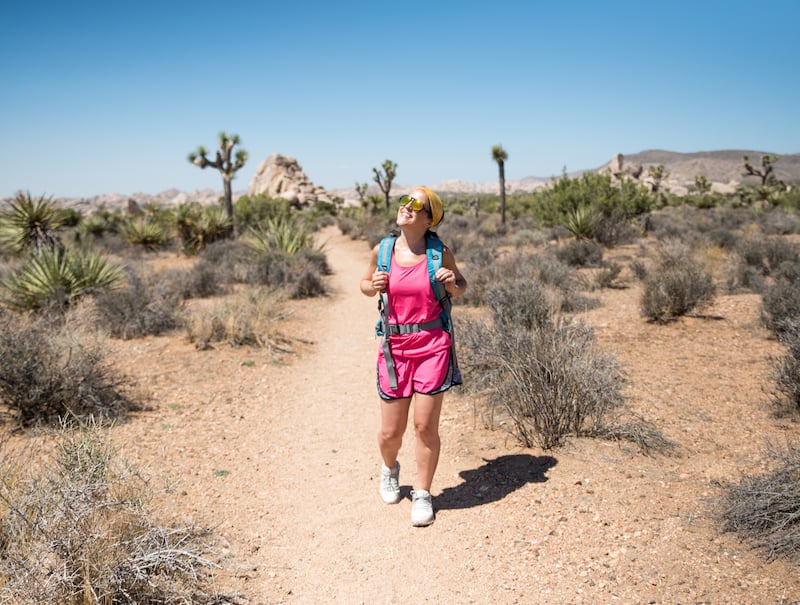
7. Stay flexible
While it’s always good to have a plan, no matter how much time you spend planning a cross country road trip alone, there is always a chance for the unexpected.
Weather, car issues, closed attractions, and more can cause you to have to pivot. This is why it’s important to stay flexible and be willing to change course if you need to.
8. Consider if you are comfortable with remote areas
The last thing I would consider when you plan a cross country road trip is how comfortable you are in remote areas. This is especially true if you’re planning a solo US road trip.
Many areas from the West Coast to the middle of the USA (Kansas, Nebraska, Oklahoma, etc) can be sparsely populated.
If you don’t like the idea of being in remote locations, you’ll want to stick near major interstates throughout this part of the country.
I am in remote areas often, so I decided to buy a satellite communicator for peace of mind. More on that later.
Budgeting For A Cross Country Road Trip Alone
Of course, there are pros and cons to traveling alone, and this includes road tripping by yourself. While it can be empowering, it can also take a hit on your budget when there’s no one to split gas and accommodation costs with.
With that in mind, here are some tips for budgeting for a solo cross country road trip.
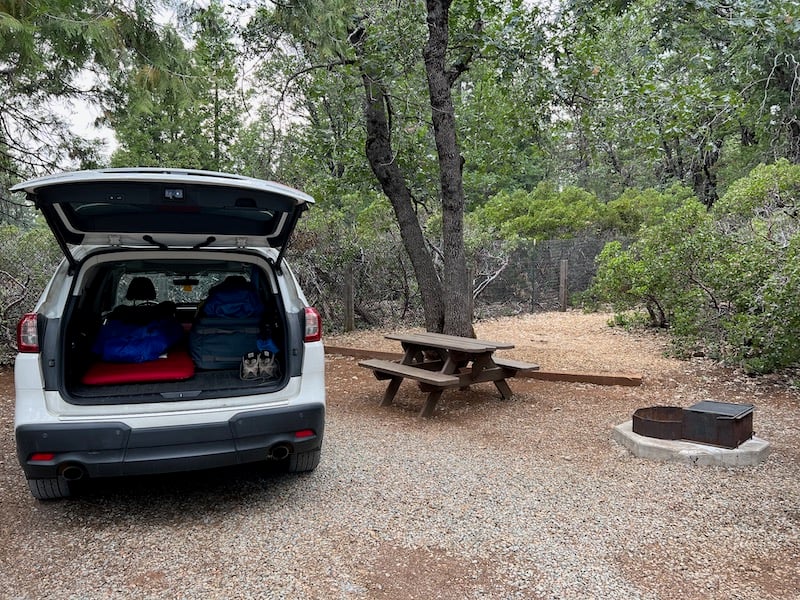
9. Research accommodation options in advance
Where are you comfortable staying and what types of accommodations do you prefer? If you are okay camping then your solo travel budget for places to stay will be much lower.
Personally, on my most recent cross country road trip, I camped every other night at campgrounds and stayed in hotels the rest of the time.
Some people stay in Cracker Barrel, Walmart, or Bass Pro Shops parking lots for free. Personally, I wasn’t comfortable with this as a solo female traveler, though you might be. Just double-check with store managers to make sure it’s okay.
Out west, you can find many free wilderness areas to camp; however, when camping on the East Coast, it’s not that easy.
You’ll want to sit down and look ahead of time at what the accommodation options are for the places you’ll be traveling through so you can find the cheapest rates.
While I personally don’t book accommodations in advance, many people don’t like the uncertainty that brings.
If you do like to book things last minute, you can use the HotelTonight app or website to find deals on last-minute hotel rooms. I find it to be hit or miss.
10. Join fuel rewards programs
A great way to save on gas is by joining fuel reward programs at large gas stations like Pilot, Shell, and Love’s. These programs usually save you between $0.05 – $0.10 per gallon.
The rewards programs can also help you save on snacks, drinks, or other items you might buy at the gas station for extra savings.

11. Limit eating out
I love eating at restaurants while traveling, but it adds up quickly. If you bring a cooler with you and stop at grocery stores a few times then you can make meals yourself with healthier options too.
I ate a lot of sandwiches on my trip and you can keep fruits and veggies in your cooler. Just make sure to add ice regularly.
Cheese and nuts are great snacks to keep on hand, and if you have time to make homemade protein balls or granola bars before leaving, those are fantastic too.
Another way to cut back on costs is picking up pre-made food at a grocery store. My favorite strategy is eating at the salad bar or deli at a grocery store, which is relatively cheap and healthy.
12. Download cash-back apps
I use the Upside app to get cash back on gas but you can also get cash back at some restaurants. It only works at certain gas station chains though.
Typically I pull up the app once I’m at a gas station to see if cash back is available and if it’s not, I don’t worry about it.
Ibotta is another option where you can earn cash back at grocery stores for specific products but you can earn at other retailers as well like Walmart or Sam’s Club.
13. Have a contingency fund
I’ve already mentioned this, but no matter how much you prepare, things happen. Please have a contingency plan for when unexpected things pop up!
For example, I got a flat tire during a California road trip. Thankfully, it only cost $35 to patch up; but, it would have been much more expensive if I’d had to buy a completely new tire.
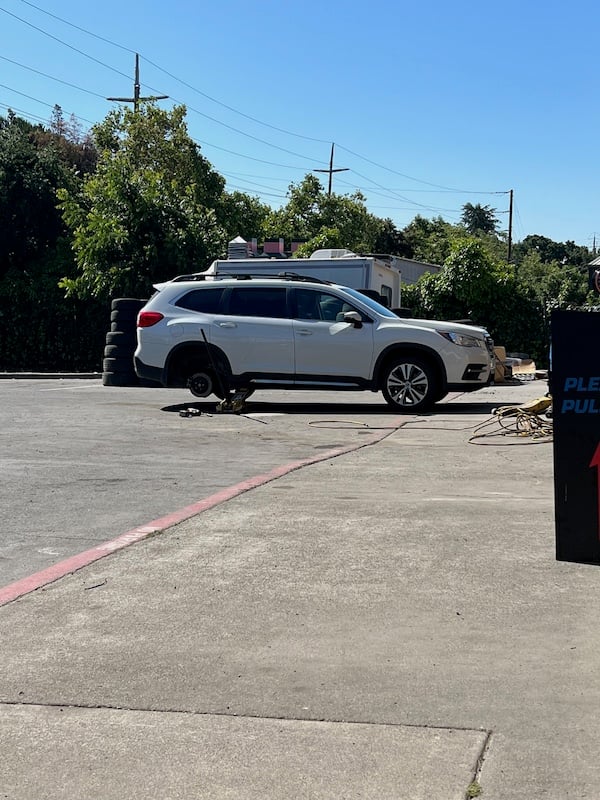
Choosing Accommodation When Driving Across Country Solo
Choosing your accommodations is completely dependent on your comfort level—not only with camping vs hotels, but also with last-minute booking vs things planned out in advance.
Here are some tips for solo road trips that apply no matter what type of accommodation you plan to book.
14. Choose safe areas
Once you have an idea of the cities or towns you’ll be staying in, do some preliminary research to determine if those locations are safe or which neighborhoods are safest in the city.
If I’m booking things last minute, I typically look at Google Reviews to see if anything mentions safety and I’ll pull up the area on Google Maps to look at street view.
No matter what, if you get to where you are supposed to stay and get bad vibes, do not be afraid to leave. It’s not worth sacrificing your safety.

15. Look at convenience from the highway
If I’m short on time, this is one of the biggest factors that I look at. How far is a hotel off the highway? Is it easy to get off the highway and back on?
In addition to the distance from the highway, I also look at what else is around the hotel. If I need food, will I be able to easily grab something nearby?
These are questions you should ask yourself before choosing your accommodation.
16. Don’t overlook amenities
Free breakfast, laundry facilities, free WiFi, and free parking are typically the amenities that I look for. Others are just an added bonus.
Free breakfast means that’s one more meal that I don’t have to pay for and I’ll grab a banana or apple to eat on the road as a mid-morning snack.
Before booking campgrounds, I’m looking at what their bathroom situation is and if there is laundry and WiFi available. Make sure to check if you need specific amenities before booking.
How To Prepare Your Vehicle For A Solo Road Trip
These are some of the most important tips for solo road trips and they are also usually the most overlooked. Driving cross country is a long way, so you want to make sure that your vehicle is in tip-top shape by taking the following steps.
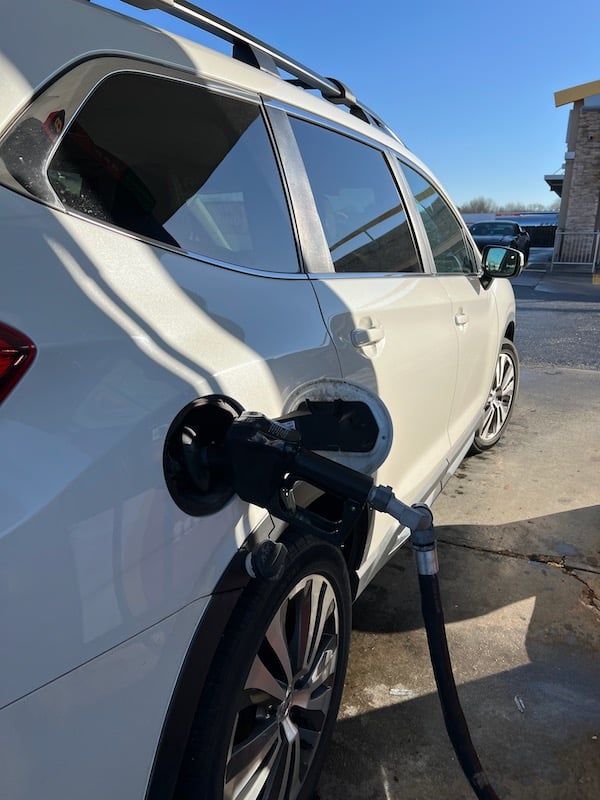
17. Get your oil changed & a full vehicle inspection
While everyone needs to do this, it’s especially important if you are driving an older car long distance. When you take your car in for an oil change, make sure they also check fluid levels, tires, and lights.
They will let you know if they see anything that needs to be fixed before you hit the road. Make sure they check your spare tire too, as you may need it along the way.
Not sure how to change a spare tire? Ask your mechanic for a lesson or check out this guide on changing a tire. You’ll definitely want to know how to do this before embarking on your cross country road trip!
18. Do a deep clean of your vehicle
Maybe it’s just me, but I feel a lot better when I’m starting out with a clean car. Because at the end of a long road trip, my car is in complete disarray.
Cleaning out your car gives you a fresh start for the trip. Make sure you keep a small trash can in there or at least a trash bag where you can collect garbage along the way.
19. Double-check your insurance & registration
Make sure your driver’s license and tags are up to date and double-check that your insurance card and registration are in your glove box.
I know most people typically keep them in their vehicle, but I took mine out just the other day to take to the DMV and forgot to put them back in my car for a few days. It’s always good to check.

Tips For Driving Cross Country Alone
If you’re wondering how to drive long distances alone, it’s actually not as hard as you might think—especially if you keep the following tips in mind.
20. Start small if you’re nervous
If it’s you’re first time embarking on a long distance solo road trip and you’re feeling uneasy, consider starting with a smaller road trip near home.
For instance, if you live in NYC, you might do a New York state road trip before embarking on a solo Midwest road trip or a coastal Maine road trip.
This will help you gain the confidence to go longer distances without feeling anxious.
21. Download plenty of entertainment
One of my best tips for driving cross country alone is to have plenty of entertainment downloaded. When a trip is really long, I like to have multiple types of entertainment downloaded as well so I can switch it up.
I typically download music, podcasts, and audiobooks to my phone just in case. When taking a road trip alone, singing in the car can be fun for the first few hours, but eventually gets boring.
And because being bored can lead to you feeling tired or restless, you’ll want to make sure you have ways to stay entertained and engaged.
22. Take a nap when tired
If you don’t listen to any of the other tips for driving long distances alone, please listen to this one: take a nap when you are tired.
Driving while tired is incredibly dangerous. According to the National Safety Council, about 328,000 drowsy driving crashes occur annually, with about 109,000 of those resulting in an injury and about 6,400 being fatal.
To help combat this, the CDC recommends getting at least 7 hours of sleep, avoiding alcohol, and developing good sleep habits (try to create a sleep schedule before your road trip).
If you start feeling drowsy or getting “white line fever,” pull off at a rest area or a gas station in a safe area and take a quick nap. If it’s late at night, find a place to stay if needed.

23. Make stops more often
When driving solo, I find that I like to make stops more often. This helps me to stay awake and alert by getting my body moving. Plus, I get plenty of bathroom breaks since I try to stay hydrated on road trips—which helps me stay alert.
Hopefully you are also stopping to explore different attractions, but if you have a long day of driving, it’s still important to get out and stretch your legs regularly.
How To Stay Safe While Driving Alone Cross Country
Travel safety is always important to consider—though it’s extra important when driving cross country alone as a woman.
Unfortunately, it’s something we have to keep in mind at all times. Here are some ways to help protect yourself while driving cross country solo.
24. Share your itinerary with family or a close friend
Once you’ve planned out your road trip itinerary, share it with a close friend or family member. I love spontaneous road trips alone, but even then I give my husband my planned route and let him know each day where I plan to stay that night.
Which brings me to my next point: check in with someone often—preferably daily—so they’ll know as soon as possible when something isn’t right.
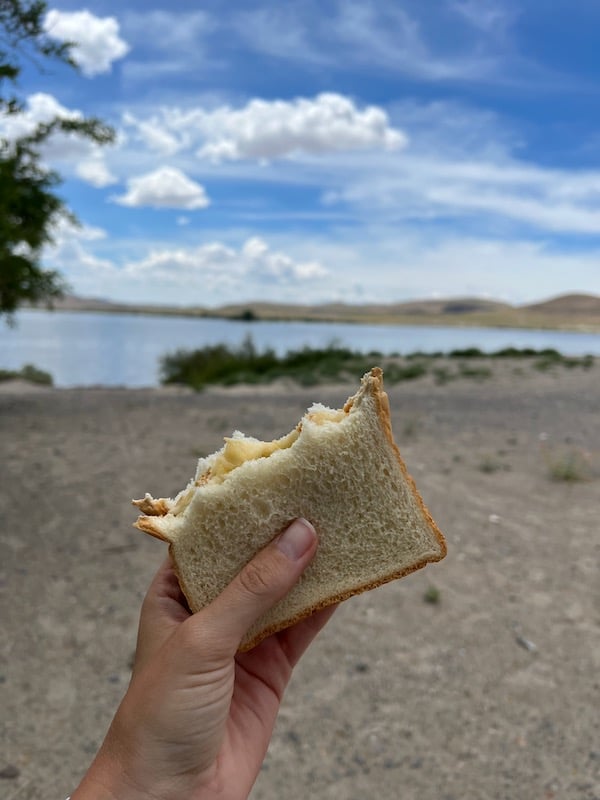
25. Consider taking a satellite communication device
Not everyone needs one of these, especially if you plan on staying within cell service range for most of your trip.
However, typically on my solo road trips I do a lot of hiking in remote areas and know I’ll be driving through smaller towns instead of taking the interstate out west.
The Garmin inReach Mini 2 (which you can also get on Amazon) is what I have and thankfully I haven’t had to use it, but it does give me peace of mind just in case.
I have a friend who has had to use it twice and it has saved her life, so it really is an invaluable travel safety essential.
26. Only stop in well-lit areas at night
Ideally, you won’t drive after dark when traveling cross country by car alone, but I know sometimes that can’t be helped.
I try to only stop at well-lit areas at night and I don’t run my gas tank down too far in case I get a bad feeling about a place I want to stop.
Additionally, I try to find gas stations that have other things around so they’ll be populated and I won’t be totally alone outside of my car.
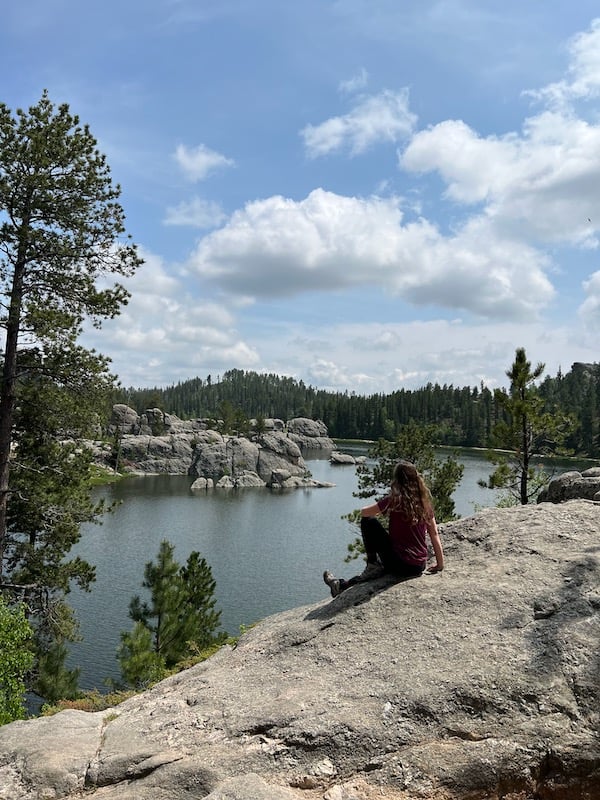
27. Trust your instincts
When you get a bad feeling about something, don’t ignore it. If your gut is telling you that you need to get out of a situation, always trust it.
I’ve driven many different routes around the country and only had one case where I felt uneasy. I got out of there and, to this day, know that I made the right choice.
While in Texas, hiking in a very remote area, I noticed a truck get right up on my bumper and then back off while driving down a dirt road. After I pulled into the trailhead parking lot, the truck slowed down almost to a stop while passing the lot, and then took off.
I walked out onto the trail but had a really bad feeling so after I took some photos of the plants I came to see, I decided to turn back and leave instead of hiking the full trail.
That same truck was in the parking lot when I got back with a lone male driver sitting there with the windows down. Thankfully, another family had pulled in and they were getting their kids out to go on the trail but I left as quickly as possible.
Am I sure that he had bad intentions? No. But I am thankful that I listened to that nagging feeling in my gut and got out of there.
Tips For Packing For A Solo Cross Country Road Trip
In addition to all the regular stuff like clothes and toiletries, there are a few additional things I throw in the car for long road trips as well.
Also, don’t forget the camping gear if you plan on camping at all—which can help save you money on your solo road trip. Other road trip packing tips include:
28. Pack an up-to-date atlas
One of the best tips for a solo road trip that I’ve ever gotten is to pack an atlas—and make sure it’s up to date!
If you don’t know how to read a map, you’ll want to get familiar with it before heading out. I also recommend familiarizing yourself with the route you plan on taking.
This has come in handy for me many times, particularly when driving through areas with little cell service or where I’ve had to make an unplanned stop.
Yes, you can download maps on Google Maps, but that can take up a lot of memory on your phone. Plus, technology seems to always glitch on me when I need it most, so I like to have my route down on paper so I never have to worry.
29. Keep snacks in easy reach
Pack lots of snacks, and try to make them healthy ones. I keep snacks in a bag in my front seat so they are in easy reach when I need them.
Nuts, granola bars, and fruit are just a few good options when you are on the go. Here are also some healthy and energizing snack recommendations.
30. Bring clothes for a week & do laundry
While I love road trips because I can throw anything in my car that I might need, I prefer packing light when it comes to clothes.
There are typically plenty of opportunities to do laundry when you’re on a road trip. Plus, this means fewer decisions to make when getting ready in the morning.
Alternatively, you can use a Scubba Portable Wash Bag—which has a washboard in the bag—to do laundry on the go.
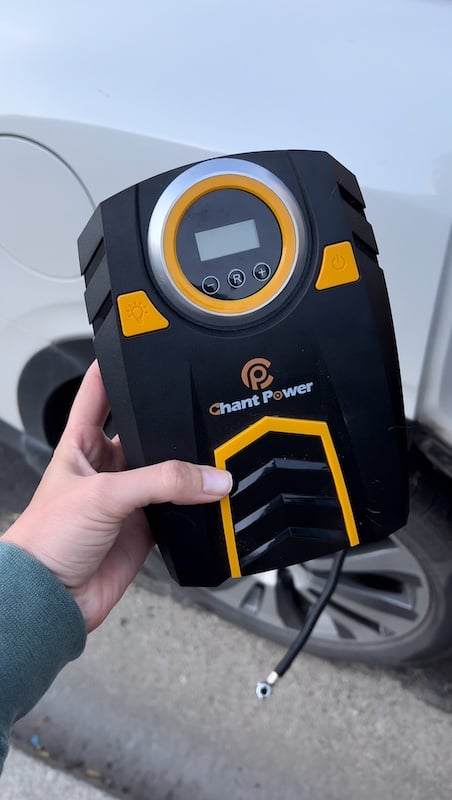
31. Don’t forget the essentials
So what are the solo road trip essentials you should pack? Here are some things you want to be sure to have in addition to your usual travel items:
- Raincoat
- Blanket (this sustainably-made Puffy Kachula Adventure Blanket can also be used as a waterproof poncho; get 15% off with code JESSIE15)
- Extra water and a water filter / filtering bottle if you’ll be hiking
- Snacks
- First aid kit
- Sunglasses
- Flashlight & extra batteries
- Portable digital air compressor & tire plug kit
- Jumper cables or portable battery jump starter
- Atlas
- AAA card (or other discount cards)
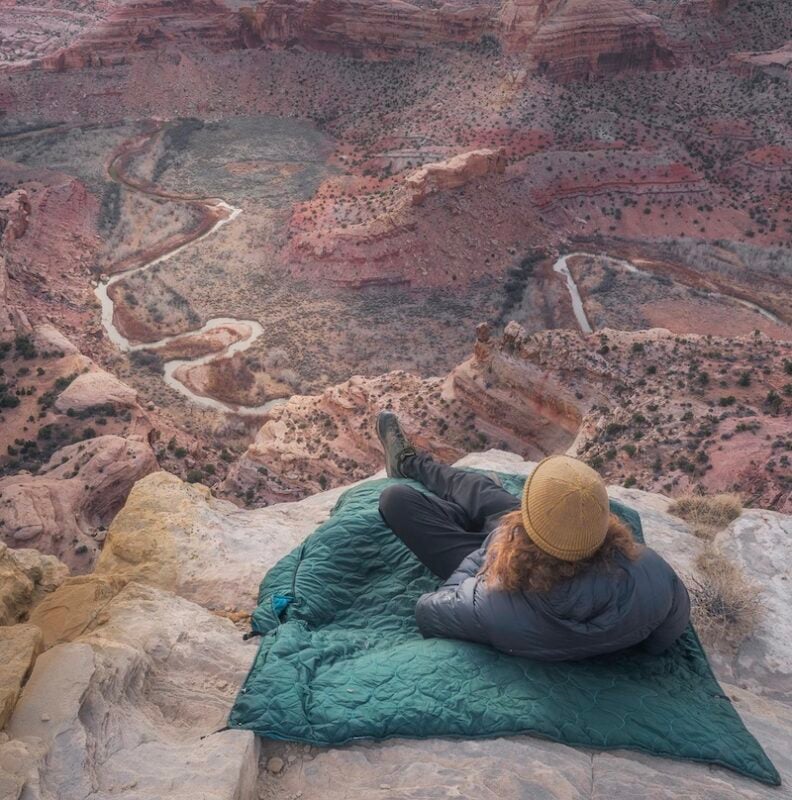
Travel Insurance For Driving Cross Country
When driving cross country alone— or traveling anywhere else in the world—it’s wise to get travel insurance.
One of the best travel medical insurance for travelers is SafetyWing as they’ve got a large network and offer both short-term and long-term coverage—including coverage if you’re traveling for months as well as limited coverage in your home country.
Additionally, SafetyWing is budget-friendly and offers $250,000 worth of coverage with just one low overall deductible of $250.
Click here to price out travel insurance for your trip in just a few clicks.
Frequently Asked Questions About Driving Cross Country Alone
Now that we’ve gone over some of the best tips for a solo road trip, let’s answer some frequently asked questions:
Q) Can you drive cross country alone?
You absolutely can drive cross country alone! I’ve done it and know many other women who have made the trip as well. Traveling cross country by car alone isn’t as difficult as you may think, especially with proper planning.
Q) Is it safe to drive cross country alone?
Yes, it’s safe to drive cross country alone. Follow important solo road trip tips like having an emergency plan, keeping family or friends updated, and trusting your instincts to minimize risks.
Q) Is it safe for a woman to drive cross country alone?
It is safe for a woman to drive cross country alone. While you do need to stay vigilant, I look at it as no different than taking day trips or weekend trips solo. I recommend starting with those kinds of trips and building your comfort level up.
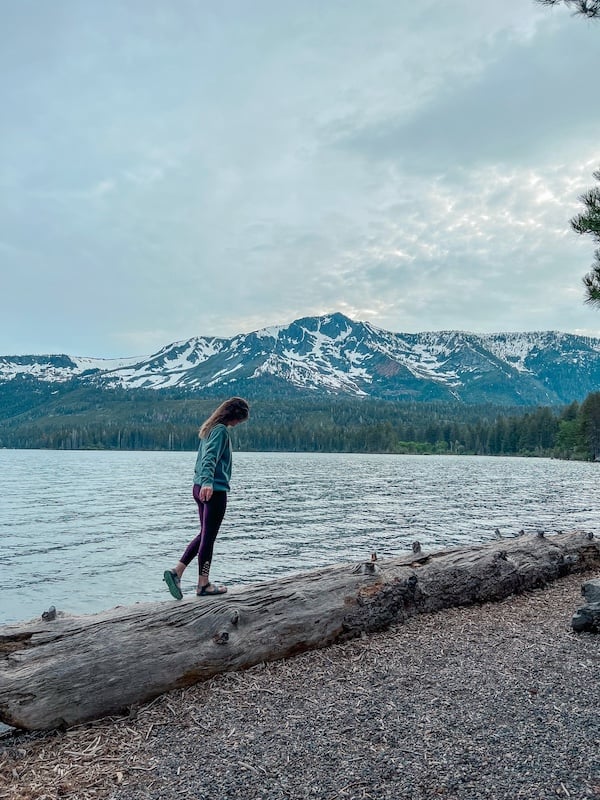
Q) What are the dangers of driving cross country alone?
Some of the biggest dangers of driving cross country alone are drowsiness and potential car trouble or accidents. That’s why one of the biggest tips for long drives alone is to pull over for a nap when you are tired and have your car inspected before leaving.
Q) Should I drive my own car cross country?
This is a personal preference. I like having my own car when driving cross country; however, if you don’t want to put the miles on your car, then you can rent one to make the trip.
You also might consider renting if your car doesn’t get good gas mileage. Price out what it would cost to rent a car and see if you think it’s worth it.
Q) How long does it realistically take to drive cross country?
Depending on your start and end point, you should plan at least 5 days minimum to drive cross country. This would not include much time to stop and explore anywhere and assumes driving approximately 8 hours each day.
If you want to stop and see some sights then you’ll want to give yourself a week or more to make the trip.
Q) How many miles can a person drive in a day?
If you are driving on the interstate, you can cover a lot more miles in a day and I would recommend setting a maximum of 500 miles per day. If you are taking backroads, I recommend even less.
This is also a personal preference, but 500 miles is about 8 hours of driving so hopefully you won’t get too uncomfortable on the trip.
Q) Can you drive cross country in 2 days?
No, you cannot drive cross country in 2 days on a solo road trip. Cross country road trips are 40+ hours of total driving time depending on your start and end points. This does not include any bathroom or food stops nor does it account for traffic slowdowns.

Q) What is the best time of year to drive cross country?
Summer is the most popular time to take a cross country road trip, as the weather is best in most parts of the country; however, if you don’t like the heat, you may want to avoid the desert in the Southwest. Spring and fall are also great times of year to do this if you have the flexibility.
If you choose to travel in winter, you’ll want to keep a close eye on the weather and avoid a northern route through the country if you aren’t comfortable driving in snow.
Q) Is it cheaper to drive across the country or fly?
Typically, it is cheaper to fly across the country vs drive when you are solo. The costs of gas, food, and accommodations add up quickly and are considerably more than what you would pay for a flight. Driving is only cheaper when you have multiple people in the car splitting costs.
Q) Can you drive cross country with a dog?
Yes, you can drive cross-country in the U.S. with a dog, but it requires careful planning to ensure the safety and comfort of your pet, including regular stops for exercise, water, and bathroom breaks, as well as making sure pet-friendly accommodations are booked in advance.
Final Thoughts On Driving Cross Country Alone
Whether you are driving by yourself for the first time or have done it before, I hope these tips have helped you plan your epic road trip and realize that it’s totally doable!
These drives are so freeing and I dream about taking more solo cross country road trips every day. The US is beautiful and diverse and this is an amazing way to appreciate the country.
What would you add to these tips for driving cross country alone?
About The Author

Anna is a travel blogger and photographer at Stuck On The Go where she loves writing about outdoor adventure and small town USA. She created her blog to help busy people incorporate more adventures into their lives and inspire them to try new things—even if it’s scary. You can typically find her out on a trail or in a kayak and she’s always in search of the best restaurants in town. She is based in North Carolina with her husband and German Shepherd who often tag along on weekend trips but she’s known to take off on long solo road trips often.


